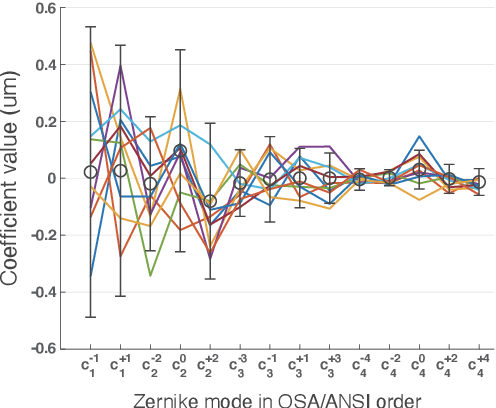Optical modelling of accommodative light field display system and prediction of human eye responses
Paper and Code
Apr 02, 2022



The spatio-angular resolution of a light field (LF) display is a crucial factor for delivering adequate spatial image quality and eliciting an accommodation response. Previous studies have modelled retinal image formation with an LF display and evaluated whether accommodation would be evoked correctly. The models were mostly based on ray-tracing and a schematic eye model, which pose computational complexity and inaccurately represent the human eye population's behaviour. We propose an efficient wave-optics-based framework to model the human eye and a general LF display. With the model, we simulated the retinal point spread function (PSF) of a point rendered by an LF display at various depths to characterise the retinal image quality. Additionally, accommodation responses to rendered LF images were estimated by computing the visual Strehl ratio based on the optical transfer function (VSOTF) from the PSFs. We assumed an ideal LF display that had an infinite spatial resolution and was free from optical aberrations in the simulation. We tested images rendered at 0--4 dioptres of depths having angular resolutions of up to 4x4 viewpoints within a pupil. The simulation predicted small and constant accommodation errors, which contradict the findings of previous studies. An evaluation of the optical resolution of the rendered retinal image suggested a trade-off between the maximum resolution achievable and the depth range of a rendered image where in-focus resolution is kept high. The proposed framework can be used to evaluate the upper bound of the optical performance of an LF display for realistically aberrated eyes, which may help to find an optimal spatio-angular resolution required to render a high quality 3D scene.
 Add to Chrome
Add to Chrome Add to Firefox
Add to Firefox Add to Edge
Add to Edge